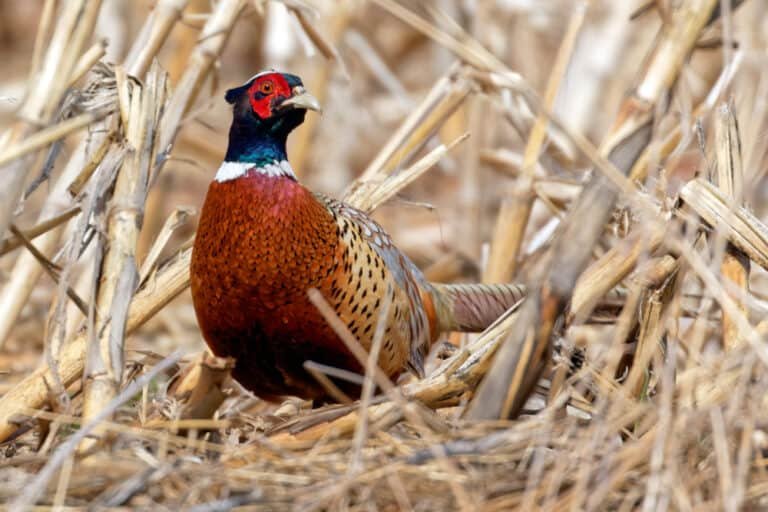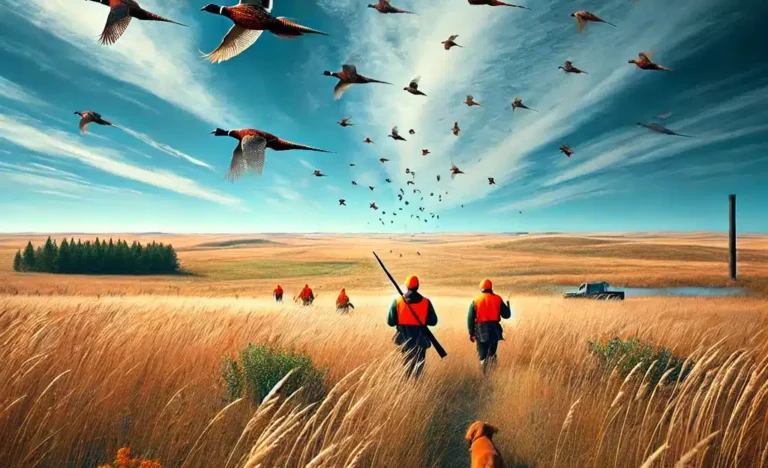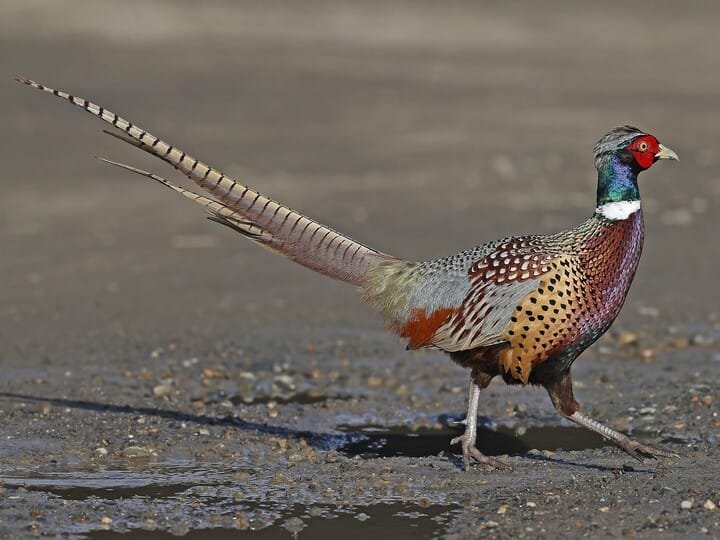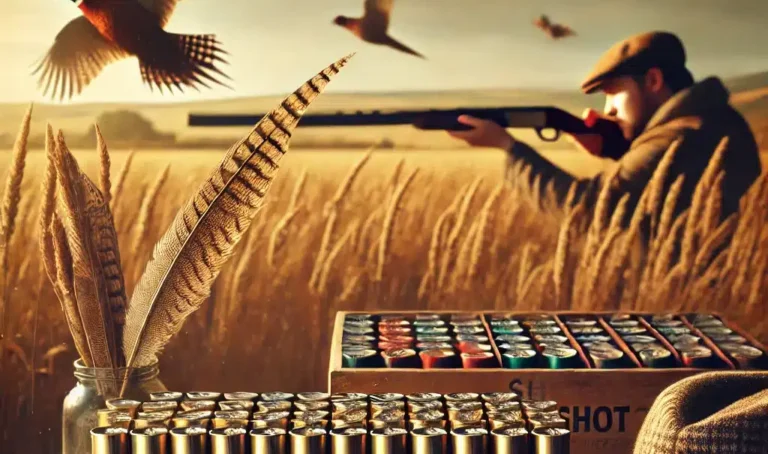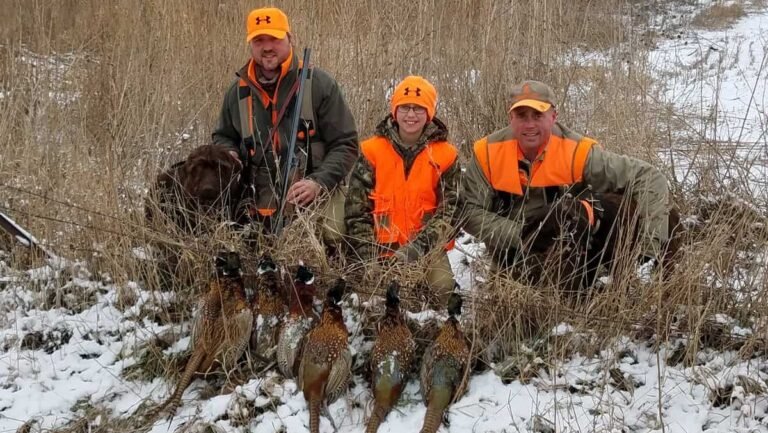Nebraska Pheasant Hunting: The Best Corny Advice for Birds
Nebraska, the heartland of America, has long been celebrated for its deep-rooted hunting heritage. From vast prairies to rolling hills, this Midwestern state offers a diverse landscape that has captivated hunters for generations. In this blog we will dive into Nebraska pheasant hunting.
With its abundance of game species and vast hunting grounds, Nebraska holds a special place in the hearts of outdoor enthusiasts. Among the many game animals pursued in this great state, pheasant hunting is an iconic pursuit cherished by residents and visitors alike.
Pheasant Season Dates 2024-2025
Pheasant: Oct. 26, 2024 – Jan. 31, 2025
Youth Pheasant: October 19–20, 2024
Nebraska’s Rich Hunting Heritage
Nebraska boasts a storied hunting legacy that dates back centuries. Native tribes relied on these bountiful lands to sustain their livelihoods through hunting and gathering. The arrival of European settlers brought a new era of hunting traditions, where harvesting game became essential for survival in this untamed land.
In modern times, Nebraska remains committed to preserving its rich hunting heritage while providing ample opportunities for both sport and subsistence hunters. The state’s dedication to wildlife management and habitat conservation ensures sustainable populations of game animals like never before.
The Topic of Pheasant Hunting in Nebraska
Among the various wildlife pursuits available in Nebraska, pheasant hunting takes center stage due to its thrilling challenges and rewarding experiences. Pheasants are revered for their brilliant plumage, explosive takeoffs, and elusive nature – qualities that make them highly sought-after targets among avid hunters.
With an estimated population exceeding 300,000 birds annually, Nebraska is renowned as one of the premier destinations for pursuing these vibrant upland game birds. Whether you are a seasoned hunter or someone exploring the world of pheasant hunting for the first time, delving into Nebraska’s pheasant fields promises an exhilarating adventure filled with camaraderie and unforgettable moments in nature’s embrace.
In this article, we will delve into the allure of Nebraska’s pheasant hunting, from understanding the characteristics of these game birds to exploring the best hunting locations and strategies. Prepare to immerse yourself in the beauty of Nebraska’s landscapes and embark on a journey to test your skills, ignite your passion for hunting, and create lasting memories.
Pheasants in Nebraska
Pheasant hunting is an esteemed tradition in Nebraska, with vast fields and diverse landscapes providing an ideal habitat for the ring-necked pheasant (Phasianus colchicus). Originally native to Asia, this striking game bird was introduced to North America in the late 1800s and has thrived in Nebraska’s agricultural landscapes. The ring-necked pheasant is now synonymous with Nebraska’s hunting heritage, attracting athletes from far and wide.
The ring-necked pheasant (Phasianus colchicus)
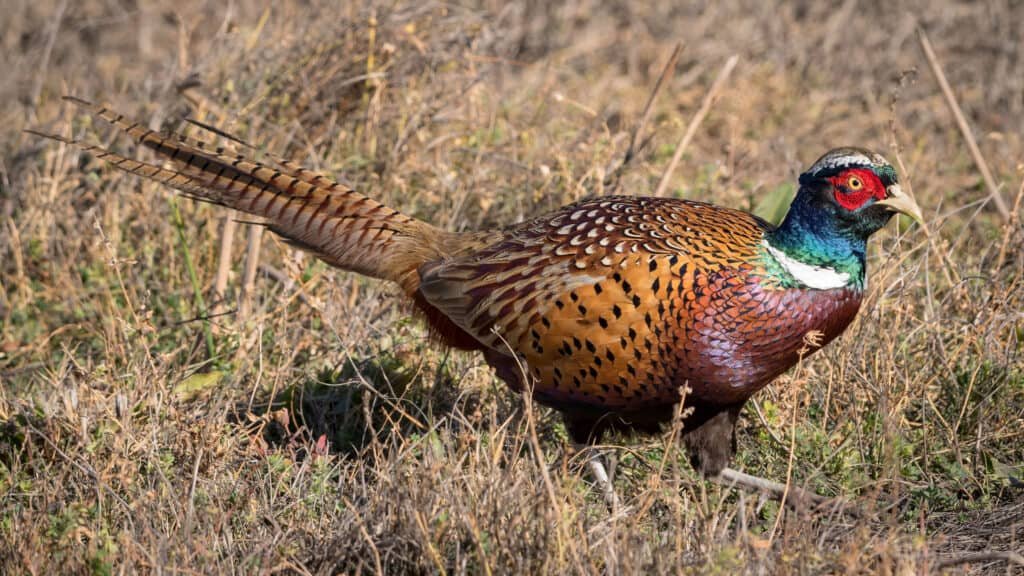
The ring-necked pheasant is a medium-sized bird, measuring 24-36 inches long and weighing between two to three pounds. Males, known as roosters or cocks, boast vibrant plumage that sets them apart from their female counterparts.
Their long tail feathers display iridescent green and brown hues, while their chest adorns a distinctive white ring against a rich orange-brown background. Females, or hens, possess more subdued coloring with mottled shades of brown that serve as camouflage during nesting periods.
Physical characteristics and distinctive features
Beyond its impressive plumage, the ring-necked pheasant exhibits several physical characteristics that make it well-suited for survival in Nebraska’s habitats. They possess strong legs for running swiftly across open fields when startled or pursued by predators.
Additionally, their wings allow them to fly short distances at considerable speeds—often triggering an exhilarating chase during hunts. With sharp spurs on their legs and formidable beaks designed for pecking through dense vegetation or digging for food sources like seeds and insects, they are adaptable creatures capable of navigating various terrains.
Habitat preferences and behavior patterns
The ring-necked pheasant prefers diverse landscapes with open grasslands, croplands, and shrubby cover. In Nebraska, these birds are abundant within the state’s agricultural regions, particularly near cornfields, wheat fields, and CRP (Conservation Reserve Program) land.
Pheasants are generally diurnal birds, primarily active during daylight hours. They spend their days foraging for food and seeking shelter from potential predators in dense vegetation or brushy cover.
The Best Time for Pheasant Hunting in Nebraska
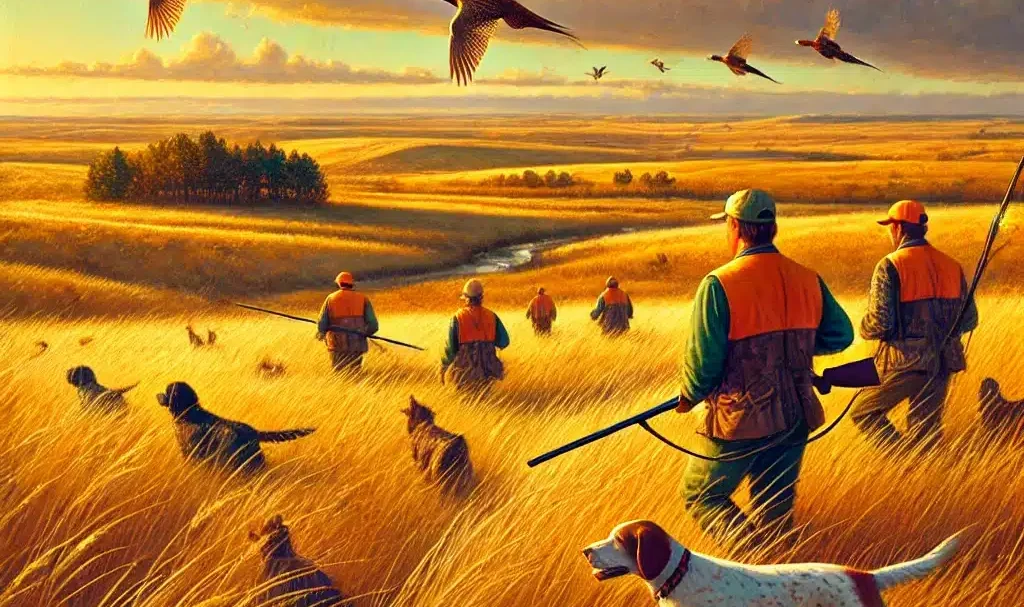
Early Season (October): Mild Weather and Challenging Hunts
As the crisp autumn air begins to settle over the enchanting landscapes of Nebraska, pheasant hunting enthusiasts eagerly await the start of the early season, which typically begins in October.
This time of year offers several advantages for passionate hunters seeking memorable experiences pursuing these majestic birds. One significant advantage is the mild weather conditions that prevail during this period.
With temperatures often hovering between 50 to 70 degrees Fahrenheit, hunters can relish pleasant days outdoors without enduring extreme cold or heat. Moreover, these moderate temperatures beckon pheasants out into open spaces, making them more accessible targets for skilled sharpshooters.
Another intriguing aspect of the early season is the reduced hunting pressure. Since many hunters tend to wait for the peak season, those who venture into Nebraska’s fields and prairies during October find themselves blessed with more solitude and tranquility.
This allows them to fully immerse themselves in nature’s symphony, hearing their heartbeats merge with rustling leaves and singing birdsong as they navigate undulating terrains. Amidst this serene ambiance lies a unique challenge–younger birds also take flight at this time.
These juvenile pheasants present an added difficulty due to their smaller size, agility, and lack of experience compared to their mature counterparts. Successfully bagging a young rooster under such circumstances requires honed shooting skills, heightened senses, and adaptability – qualities that top-tier hunters have cultivated over the years spent roaming these bountiful lands.
Migration Patterns and Enhanced Scenting Conditions
Entering November marks the apex of excitement for dedicated pheasant enthusiasts as Nebraska transforms into a haven for resident and migratory birds. This peak season promises a cornucopia of thrilling hunting opportunities due to two primary factors: the larger population of mature birds and the arrival of migrants from more northern regions.
As winter approaches, countless pheasants embark on their annual journey southward, seeking refuge in Nebraska’s fertile fields and abundant cover.
This influx significantly surges overall bird numbers, allowing hunters to test their skills against various targets. The spectacle of witnessing flocks soar across the vast Midwestern skies is awe-inspiring – a testament to nature’s remarkable phenomena that lure hunters from near and far.
Additionally, the cooler temperatures prevalent during November and December enhance scenting conditions for hunting dogs, making it easier for them to track pheasants through scent trails left on dew-covered grasses or amidst frost-kissed underbrush.
The juxtaposition between the hunter’s breath mingling with wisps of steam rising from excited canines and the lightly frozen ground beneath their boots amplifies anticipation and determination.
During this time, experienced hunters adeptly maneuver through dense thickets and brushy draws as they chase after wary roosters who have honed their survival instincts over time. The challenge lies in locating these elusive birds and outsmarting them using stealth, patience, and expert calling techniques.
As rifle shots echo across Nebraska’s verdant landscapes during these months, seasoned athletes relish in camaraderie while reliving tales woven with perseverance and skill. , understanding Nebraska’s pheasant hunting seasons allows enthusiasts to tailor their experiences according to personal preferences.
Popular Pheasant Hunting Locations in Nebraska
Sandhills region
The Sandhills region of Nebraska is a paradise for pheasant hunters. It offers vast grasslands and rolling hills that provide an ideal habitat for these game birds. This expansive area covers approximately one-fourth of the state, creating ample opportunities for hunting enthusiasts to explore.
The Sandhills’ unique landscape consists of dune-covered prairies mixed with wet meadows and marshy areas, attracting a significant population of pheasants year-round.
In addition to the favorable environment, hunters benefit from the abundance of public access lands and hunting preserves scattered throughout the region. These areas provide ample space to roam and increase the chances of encountering these majestic birds.
Rainwater Basin region
Situated in South-Central Nebraska, the Rainwater Basin is another renowned destination that draws migrating pheasants and avid hunters seeking thrilling experiences. This region comprises wetland areas that serve as prime stopover sites for numerous bird species during migration seasons.
The presence of shallow wetlands and associated upland habitats makes it an attractive location for pheasants seeking food, shelter, and water sources along their journey. Hunting in the Rainwater Basin offers bountiful opportunities to pursue pheasants and presents an additional advantage — waterfowl hunting possibilities.
Various waterfowl species frequent these wetlands during specific times of the year, so hunters can diversify their experience by targeting multiple game species.
By exploring the Sandhills region’s sprawling grasslands and rolling hills and venturing into the Rainwater Basin’s rich wetland habitats, pheasant hunting enthusiasts can enjoy diverse landscapes while maximizing their chances of encountering these wily birds.
Regulations and Licensing Requirements
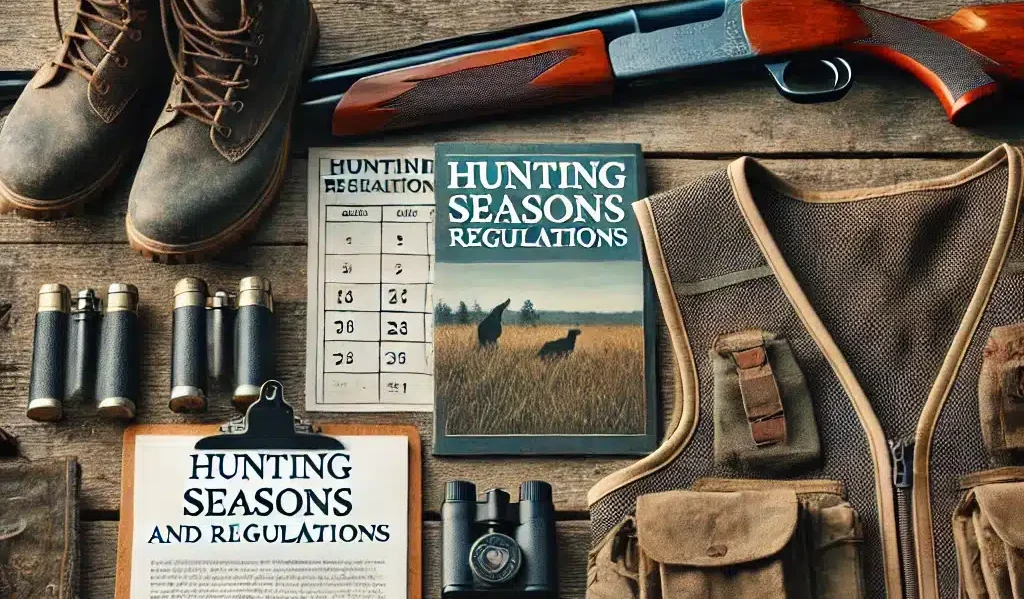
State regulations on bag limits, shooting hours, etc.
Nebraska has established specific regulations to ensure the sustainable management of pheasant populations and maintain a fair and enjoyable hunting experience. Bag limits refer to the maximum number of pheasants hunters can harvest daily.
According to current regulations, hunters in Nebraska can harvest up to three rooster (male) pheasants daily during the regular season. The possession limit is nine birds per hunter, meaning one can possess up to nine legally harvested roosters at any time.
Hunters must familiarize themselves with these bag limits, as exceeding them carries heavy fines and penalties. Additionally, understanding shooting hours is essential for safe and legal hunting practices.
In Nebraska, hunting hours for pheasants begin 30 minutes before sunrise and end 30 minutes after sunset. Hunters must adhere strictly to these designated times, as hunting outside the legal shooting hours may have serious consequences.
Obtaining necessary licenses or permits
Before embarking on an exciting pheasant hunting adventure in Nebraska, obtaining the appropriate licenses or permits as required by state law is necessary. For residents of Nebraska who are 16 years old or older, a Nebraskan resident small game license must be obtained from the Nebraska Game and Parks Commission (NGPC) website or authorized vendors throughout the state.
Non-residents have different licensing options available depending on their duration of stay. For those visitors planning a short-term hunt, a non-resident small game license offers validity for one day or ten consecutive days.
However, non-residents who intend to hunt over multiple visits within one year should consider purchasing an annual non-resident small game license. It’s worth noting that all hunters, regardless of residency, must carry a habitat stamp while hunting in Nebraska.
The habitat stamp fee directly contributes to conserving and preserving wildlife habitats throughout the state. NGPC offers an online licensing system to streamline the license acquisition process where hunters can conveniently purchase their licenses, permits, and stamps.
Additionally, physical licenses can be printed or stored digitally on a smartphone using the Nebraska Game and Parks Outdoor NebraskApp. By adhering to these regulations and obtaining the necessary licenses or permits, pheasant hunters can confidently enjoy their pursuits while contributing to wildlife conservation efforts in the beautiful state of Nebraska.
Strategies for Successful Pheasant Hunting
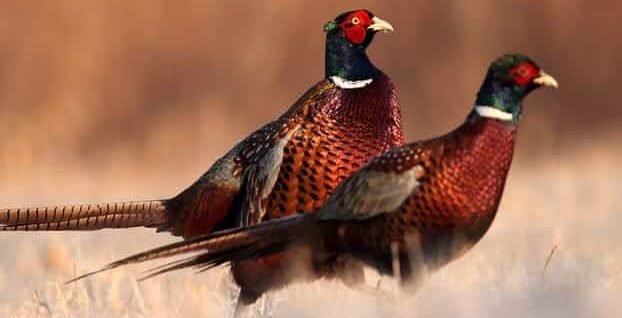
Discussion on different hunting methods
Pheasant hunting in Nebraska offers various techniques to maximize your chances of success. Two primary methods hunters employ are walking up or flushing birds with dogs and driving or blocking techniques.
Walking up or flushing birds with dogs
This traditional method involves walking through suitable pheasant habitats, such as grassy fields, prairies, or crop edges, while accompanied by well-trained bird dogs. As you move forward quietly, the dogs naturally use their keen sense of smell to locate and flush out hidden pheasants.
Once the birds take flight, you can take carefully aimed shots. This technique requires patience and a steady hand to react to a flushed bird’s sudden movement quickly.
Driving or blocking techniques
Driving refers to a collaborative effort involving multiple hunters who strategically move through the field while attempting to push the pheasants toward stationary hunters positioned at strategic locations called blocks.
The stationary hunters wait patiently for the approaching pheasants and take shots when they come within range. This method is particularly effective in larger fields where pheasants have more room to maneuver.
Conclusion – Nebraska Pheasant Hunting
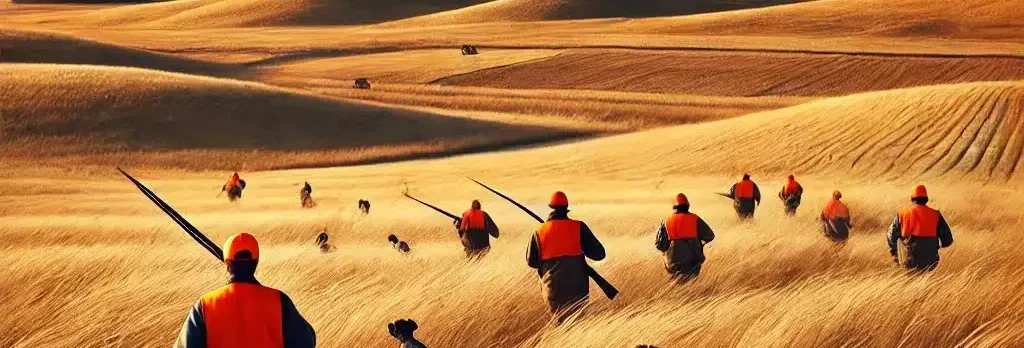
Nebraska’s rich pheasant hunting heritage presents an exciting opportunity for avid athletes seeking challenging pursuits amidst breathtaking landscapes. By exploring different hunting techniques like walking up with dogs or employing driving and blocking strategies, hunters can maximize their chances of success while embracing the thrill of the chase.
Whether it’s experiencing the adrenaline-pumping moment when a dog flushes a bird from its hiding place or participating in a coordinated drive alongside fellow enthusiasts, Nebraska provides endless possibilities for unforgettable hunts filled with camaraderie and outdoor adventure.
So gear up, embrace your passion for hunting, and let Nebraska’s bountiful pheasant population beckon you with its exhilarating sights and sounds. Happy hunting!

